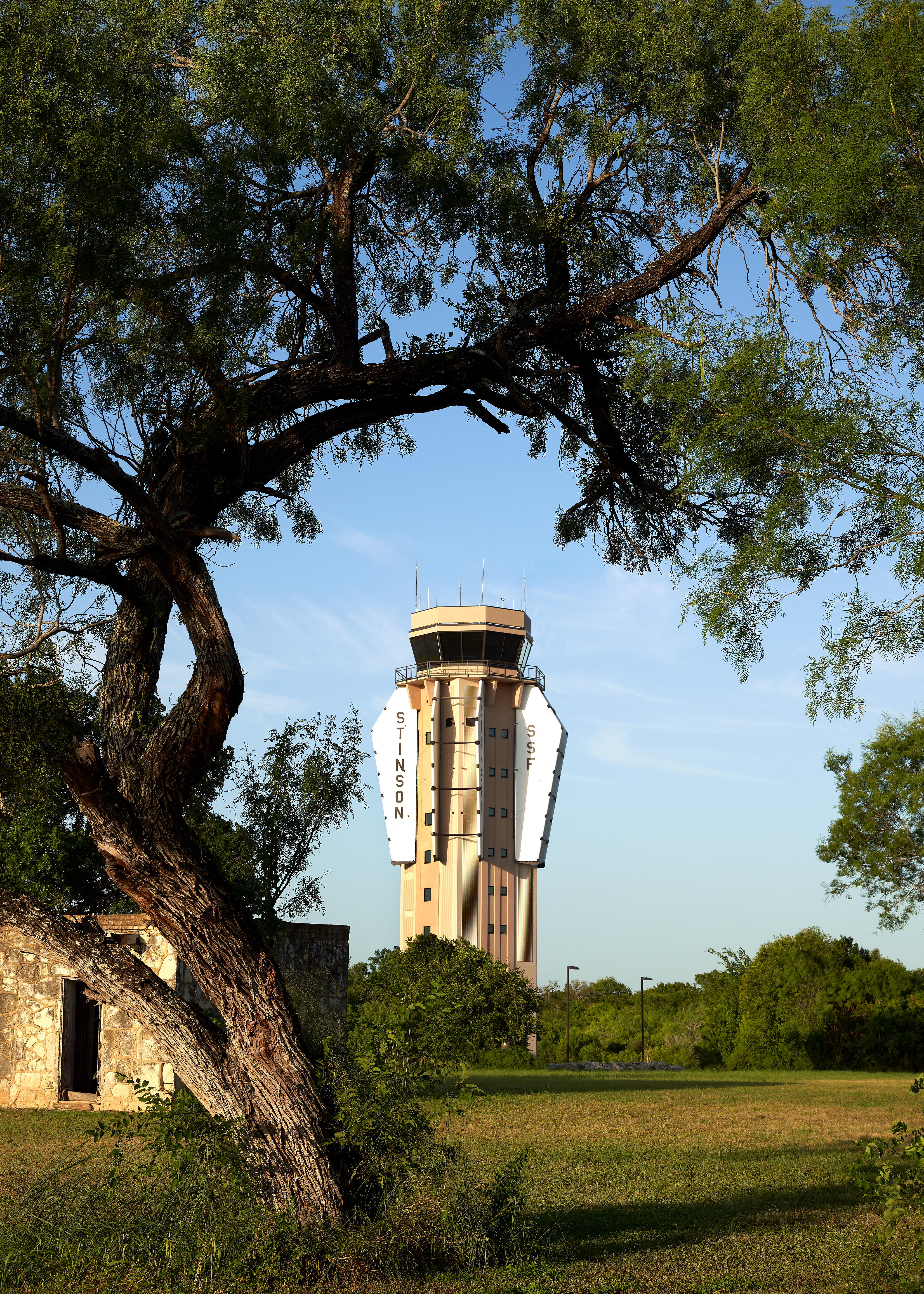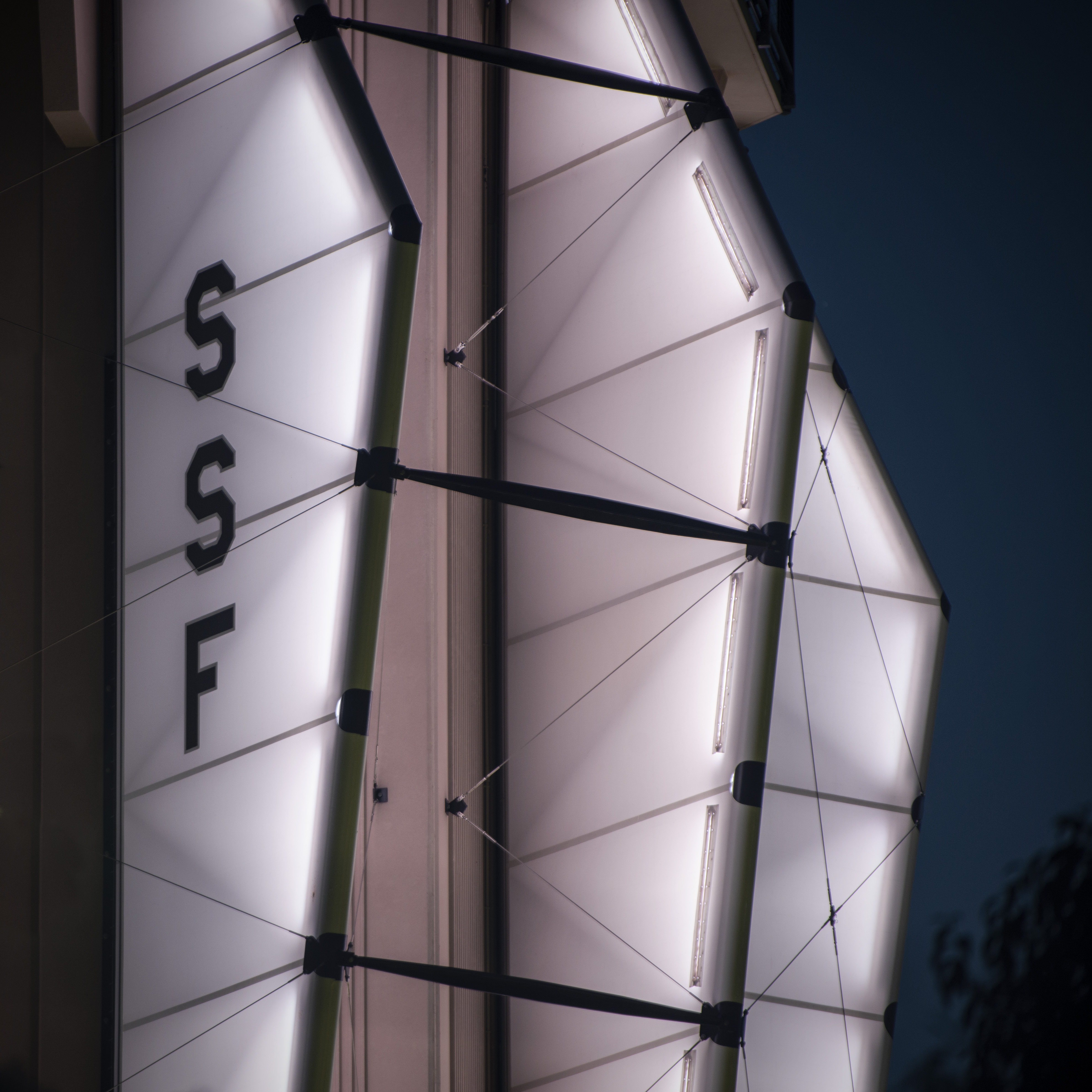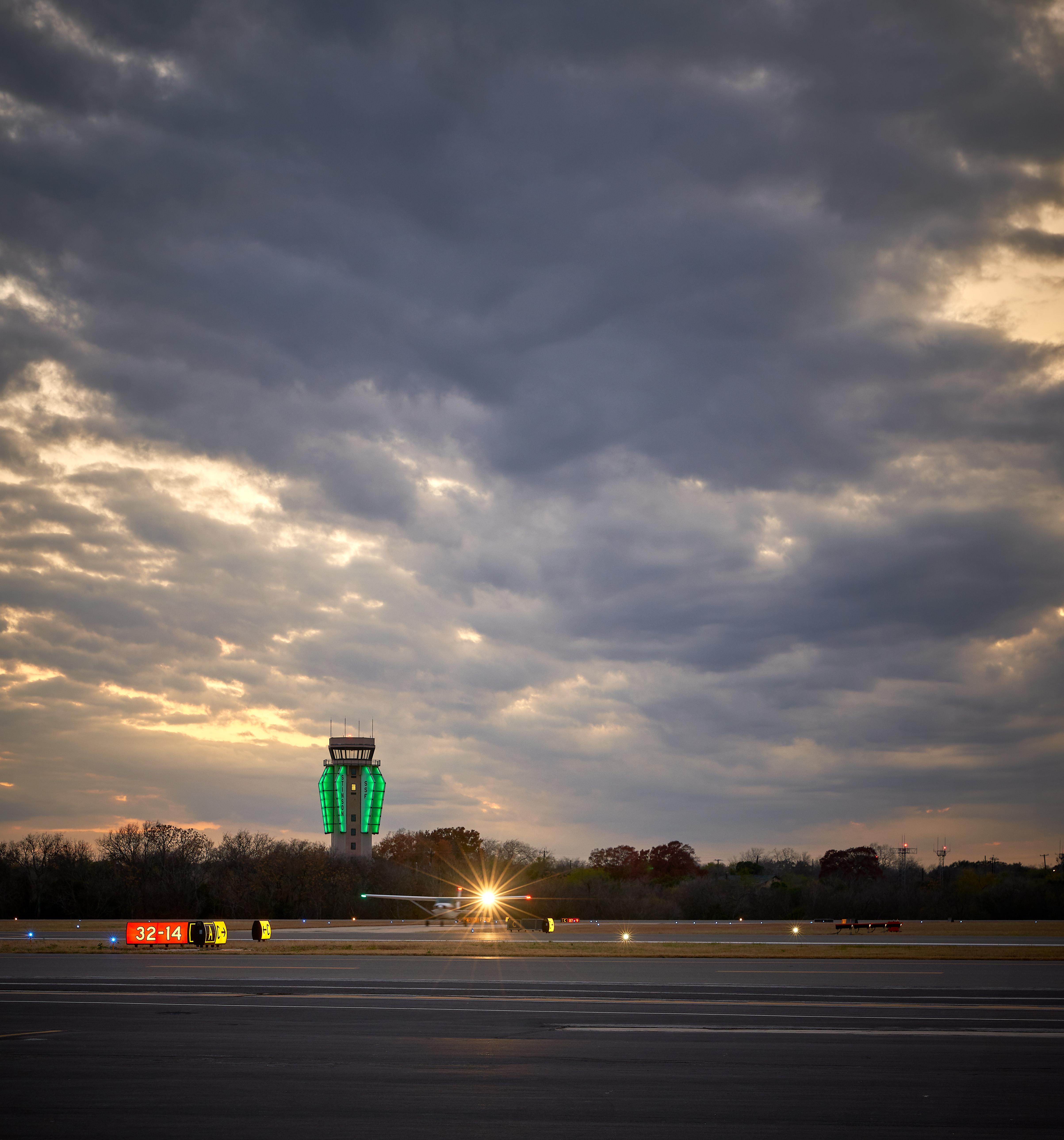Background
It turns out that turning a competition entry into reality, while also coordinating with the requirements of the city, TxDOT, and the FAA, and interacting with another design team and a specialized fabric structures construction firm, is not the kind of thing that happens overnight. Who knew? Well, we did -- this isn't our first rodeo. "We?" In this case, "we" is Work5hop and HiWorks Architecture, and this is just one of a series of collaborations between our firms. So it took a while longer than anyone may have hoped, but the result is both very true to our original concept as well as every bit as successful as we hoped.
We know that you're not going to go back and read the first article, but it has a lot of great background that drove the design, so let's revisit the high points: Stinson Field is the second-oldest continually operated airfield in the country, established by the Stinson family, and was home of one of the nation's first flying schools. Katherine became the country's fourth licensed female pilot in 1912 and had begun her work as an exhibition flyer. Sister Marjorie and brother Eddie ran the family's flying school, which was housed at San Antonio's Fort Sam Houston. Katherine also worked there as an instructor. The field's history began when the flying school relocated in 1915 to a 500-acre plot of land owned by the city.
The previous control tower and terminal facility was built in the 1930s, and was finally, despite a number of renovations, deemed insufficient for modern needs. TxDOT (which oversees general aviation airfields in Texas) selected an engineering firm which specializes in control towers. That design focused on the function of a control tower, though, without budget for architecturally interpreting the history of the airfield. To remedy that, then-city councilpersons Roberto Trevino (District 1) and Rebecca Viagran (District 3) initiated a design competition, administered by AIA San Antonio, to determine a winning design for the new tower. Our entry was selected, both on the basis of historical applicability and constructability.

Details
We coordinated extensively with the design team for the tower, TxDOT and the city's aviation department, and airport management to ensure that the wings would comply with regulations while still conveying our design intent. This resulted in only minor modifications to the original concept. Our structural engineer (Kris Barker of Barker Structural) designed the internal steel frame, while Jacob Schwartz of International Tension Structures provided input on fabric selection and some of the detailing of frame and bracing to ensure easy constructability.
Conceptually, the airfoils are pretty simple: tubular and plate steel frameworks, attached to steel plates embedded in the precast concrete of the tower. They're clad in painted steel and a high-performance fabric. Construction documentation and construction of the project was greatly facilitated by the clarity of the design concept. The integral involvement of International Tension Structures during design, and, later, during fabrication and construction, also helped ensure that the project stayed true to the concept. If you're interested in some of the details of the construction process, in fact, Fabric Architecture Magazine has a great writeup on the project.
The lighting inside the wings is fully color-capable, and we set initial programs (with colors fine-tuned on site) for major holidays. An internal calendar manages changes automatically. In case of fog or other inclement conditions which might create visibility issues, either for tower personnel or pilots, a kill switch can disable the lighting completely.

Conclusion
For us, the story of this project is collaboration: we worked closely with our design partners and a large number of project stakeholders to achieve a project that reflects the history of the field in a visible and symbolic way. It also created something special for the aviators who use the field; seeing the tower from the air is an even better view than from the ground. We're proud to be a part of Stinson Field's next 100 years of history.
